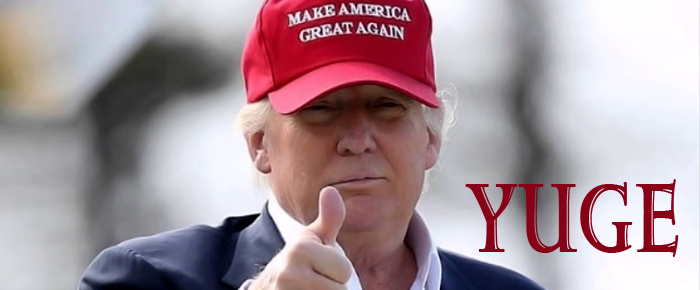
By Haddon Libby
In 2016, small and mid-sized stocks performed the best with value-oriented stocks leading the pack. Small and mid-sized companies are those with market values of less than $4.5 billion. Value-oriented companies are mostly slower growing companies that pay dividends. For 2016, small value stocks were up 26%, mid-cap value stocks were up 18%, while large value stocks rose 15% in price. More than half of these results have occurred since the election.
So why have value stocks put up such good results since the election?
Donald Trump in the White House and the GOP in charge of both the Senate and the House of Representatives means that tax reform for business is coming. There is nearly $3 trillion in corporate profits held outside of the United States with Trump and the GOP intent on lowering corporate taxes and incenting those companies to bring that money back to the United States. While some of the money will create more jobs, the vast majority of those funds will be used to buy back stock and buy other companies. This means that the stock prices should go up for the companies bringing the money back to the United States as well as the smaller companies that the cash flush companies will be acquiring.
Additionally, Trump has stated his intent to rebuild America’s crumbling infrastructure. Many believe that this will pump another $1 trillion into the economy.
When you combine these massive stimulative events on the economy, there is little doubt that this will cause the U.S. economy to do very well over the next few years.
Which companies will benefit the most? Companies with profits and cashflow – companies that are typically considered value stocks.
Small value stocks have done the best over the last few months for these reasons as well as the GOP’s stated intent of lowering regulatory restrictions on business. While well-intended, the Obama administration instituted regulations that hurt small and mid-sized businesses the most. Large businesses and their lobbying teams used regulations as competitive barriers against their smaller rivals who could not afford to manage the labyrinth of an increasingly complex regulatory environment.
When we look at stock performance by industry sector, financials have done the best since the Election, rising by 17%. This performance is for two reasons: a relaxation of regulations and expectation of higher interest rates. With all of the expected infrastructure investment, the government will be borrowing more money than ever which will cause rates to increase. Additionally, an expanding economy means that the Federal Reserve has the ability to increase rates from the historic lows that have existed since the Great Recession of 2009. Banks make more money when rates are higher as they pay little on deposits but make more on loans.
Most foreign stocks have posted negative returns since the election with stocks in India down 9%, China 7% and Pacific Rim (excluding China and Japan) down 8%. This is in large part due to the mix of a stronger U.S. Dollar and Trump’s intent of renegotiating trade deals that are fairly one-sided toward companies in these regions.
Looking at 2017, we can expect stocks to perform well across most sectors although investors can expect it to be a bumpy ride. This is because many stocks have prices that are currently higher than their inherent value. What do I mean by this? Think of your house. It might be a fine value at $300,000 but at $1 million it would be overvalued. Does this mean that it will never be worth $1 million? Maybe, but the one thing we have learned is that the prices of everything goes up over time.
Haddon Libby is an Investment Advisor and Managing Partner at Winslow Drake Investment Management. Haddon can be reached at 760.449.6349 or HLibby@WinslowDrake.com.











































